Maximum Issue Limit and Quota Management
VerifiedAdded on 2020/11/12
|27
|2111
|51
AI Summary
This assignment involves creating a UML activity diagram extension for context-aware systems. It also covers the development of a model predictive control framework using real-time building energy management system data. Furthermore, it includes an algorithm for getting a UML class diagram from a topological functioning model. The solution discusses the engineering design of systems, models, and methods. It also provides information about the use case diagram, Topological Functioning Model, and ENASE conference proceedings.
Contribute Materials
Your contribution can guide someone’s learning journey. Share your
documents today.
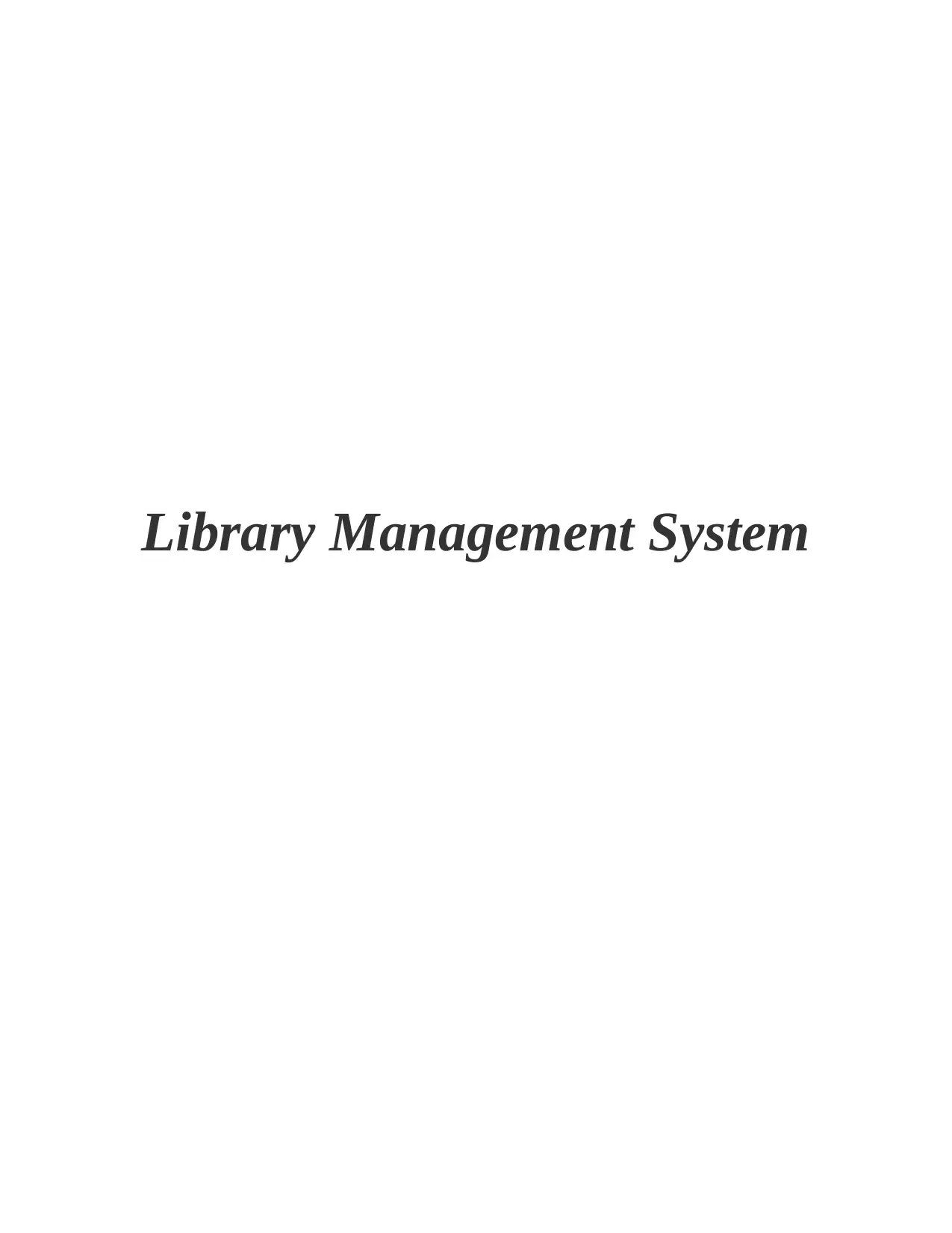
Library Management System
Secure Best Marks with AI Grader
Need help grading? Try our AI Grader for instant feedback on your assignments.
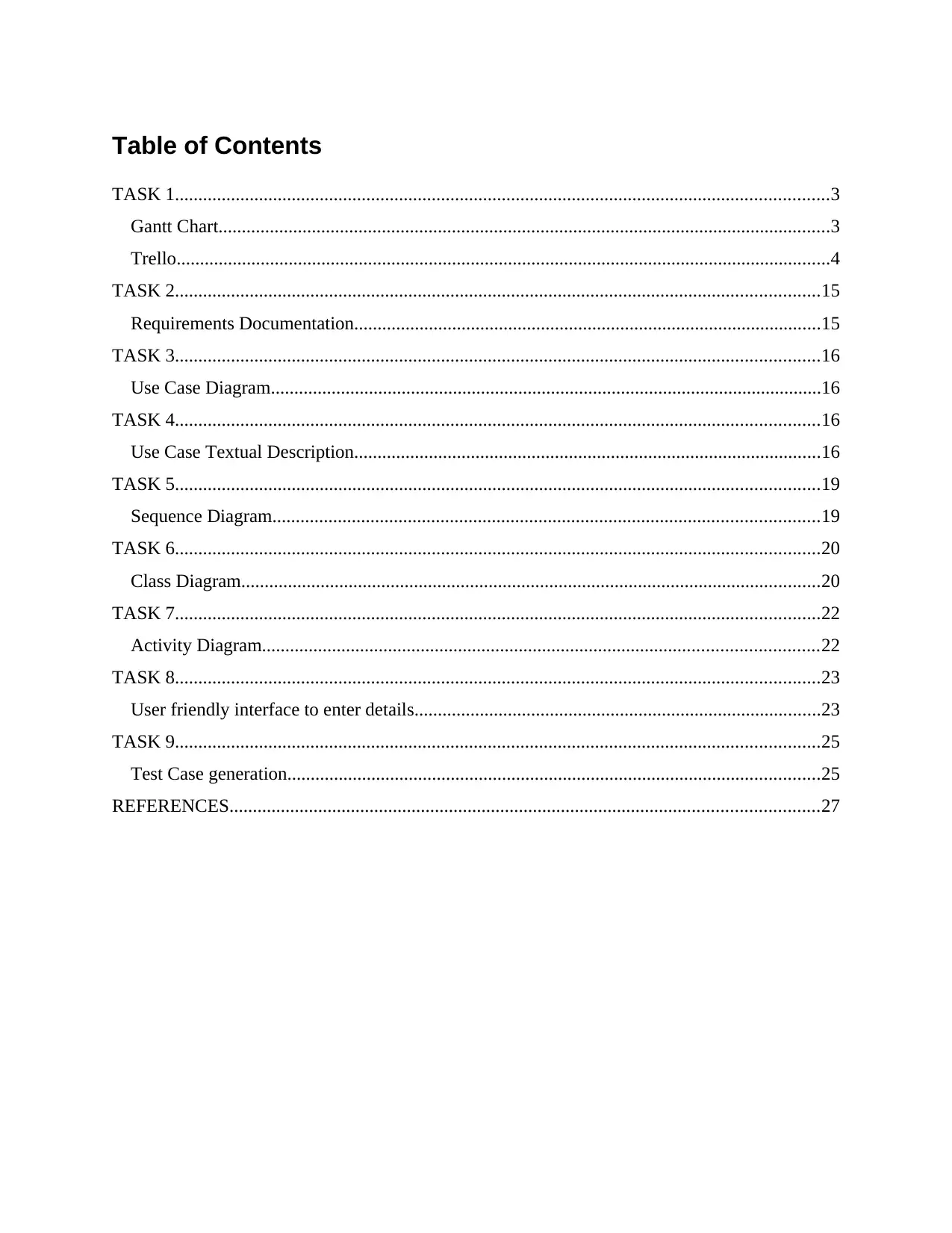
Table of Contents
TASK 1............................................................................................................................................3
Gantt Chart...................................................................................................................................3
Trello............................................................................................................................................4
TASK 2..........................................................................................................................................15
Requirements Documentation....................................................................................................15
TASK 3..........................................................................................................................................16
Use Case Diagram......................................................................................................................16
TASK 4..........................................................................................................................................16
Use Case Textual Description....................................................................................................16
TASK 5..........................................................................................................................................19
Sequence Diagram.....................................................................................................................19
TASK 6..........................................................................................................................................20
Class Diagram............................................................................................................................20
TASK 7..........................................................................................................................................22
Activity Diagram.......................................................................................................................22
TASK 8..........................................................................................................................................23
User friendly interface to enter details.......................................................................................23
TASK 9..........................................................................................................................................25
Test Case generation..................................................................................................................25
REFERENCES..............................................................................................................................27
TASK 1............................................................................................................................................3
Gantt Chart...................................................................................................................................3
Trello............................................................................................................................................4
TASK 2..........................................................................................................................................15
Requirements Documentation....................................................................................................15
TASK 3..........................................................................................................................................16
Use Case Diagram......................................................................................................................16
TASK 4..........................................................................................................................................16
Use Case Textual Description....................................................................................................16
TASK 5..........................................................................................................................................19
Sequence Diagram.....................................................................................................................19
TASK 6..........................................................................................................................................20
Class Diagram............................................................................................................................20
TASK 7..........................................................................................................................................22
Activity Diagram.......................................................................................................................22
TASK 8..........................................................................................................................................23
User friendly interface to enter details.......................................................................................23
TASK 9..........................................................................................................................................25
Test Case generation..................................................................................................................25
REFERENCES..............................................................................................................................27

TASK 1
Gantt Chart
Task Name Duration Start Finish
Planning 3 days Tue 1/8/19 Thu 1/10/19
Identifying tools and
equipment’s 4 days Fri 1/11/19 Wed 1/16/19
Setting time frame 2 days Thu 1/17/19 Fri 1/18/19
Setting standards 2 days Mon 1/21/19 Tue 1/22/19
Develop 4 days Wed 1/23/19 Mon 1/28/19
Allocating resources 4 days Wed 1/23/19 Mon 1/28/19
Assigning roles and
responsibilities 3 days Tue 1/29/19 Thu 1/31/19
Evaluate 3 days Fri 2/1/19 Tue 2/5/19
Maintaining quality 3 days Fri 2/1/19 Tue 2/5/19
Controlling activities 2 days Wed 2/6/19 Thu 2/7/19
Closure 4 days Fri 2/8/19 Wed 2/13/19
Areas of improvement 4 days Fri 2/8/19 Wed 2/13/19
Gantt Chart
Task Name Duration Start Finish
Planning 3 days Tue 1/8/19 Thu 1/10/19
Identifying tools and
equipment’s 4 days Fri 1/11/19 Wed 1/16/19
Setting time frame 2 days Thu 1/17/19 Fri 1/18/19
Setting standards 2 days Mon 1/21/19 Tue 1/22/19
Develop 4 days Wed 1/23/19 Mon 1/28/19
Allocating resources 4 days Wed 1/23/19 Mon 1/28/19
Assigning roles and
responsibilities 3 days Tue 1/29/19 Thu 1/31/19
Evaluate 3 days Fri 2/1/19 Tue 2/5/19
Maintaining quality 3 days Fri 2/1/19 Tue 2/5/19
Controlling activities 2 days Wed 2/6/19 Thu 2/7/19
Closure 4 days Fri 2/8/19 Wed 2/13/19
Areas of improvement 4 days Fri 2/8/19 Wed 2/13/19
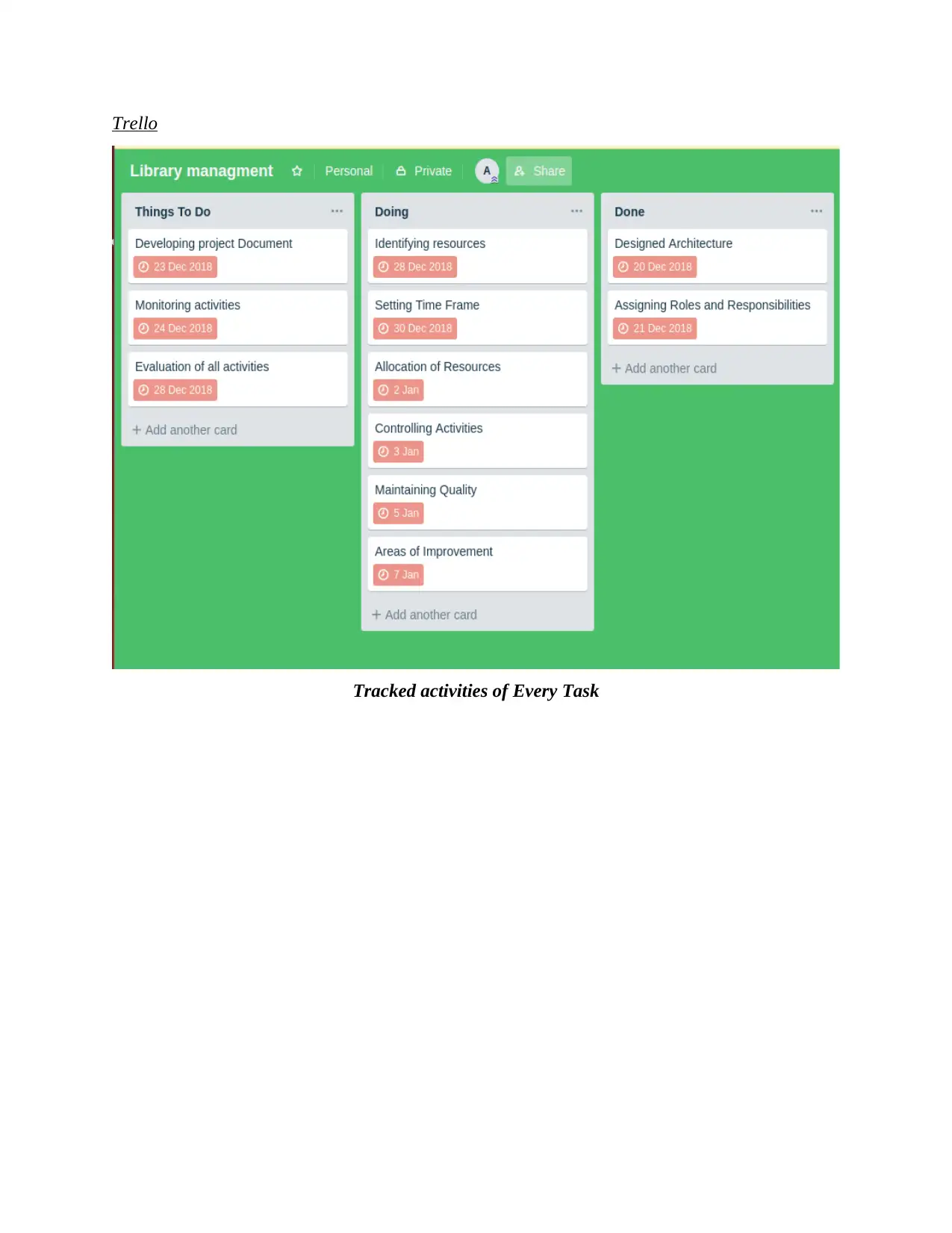
Trello
Tracked activities of Every Task
Tracked activities of Every Task
Secure Best Marks with AI Grader
Need help grading? Try our AI Grader for instant feedback on your assignments.
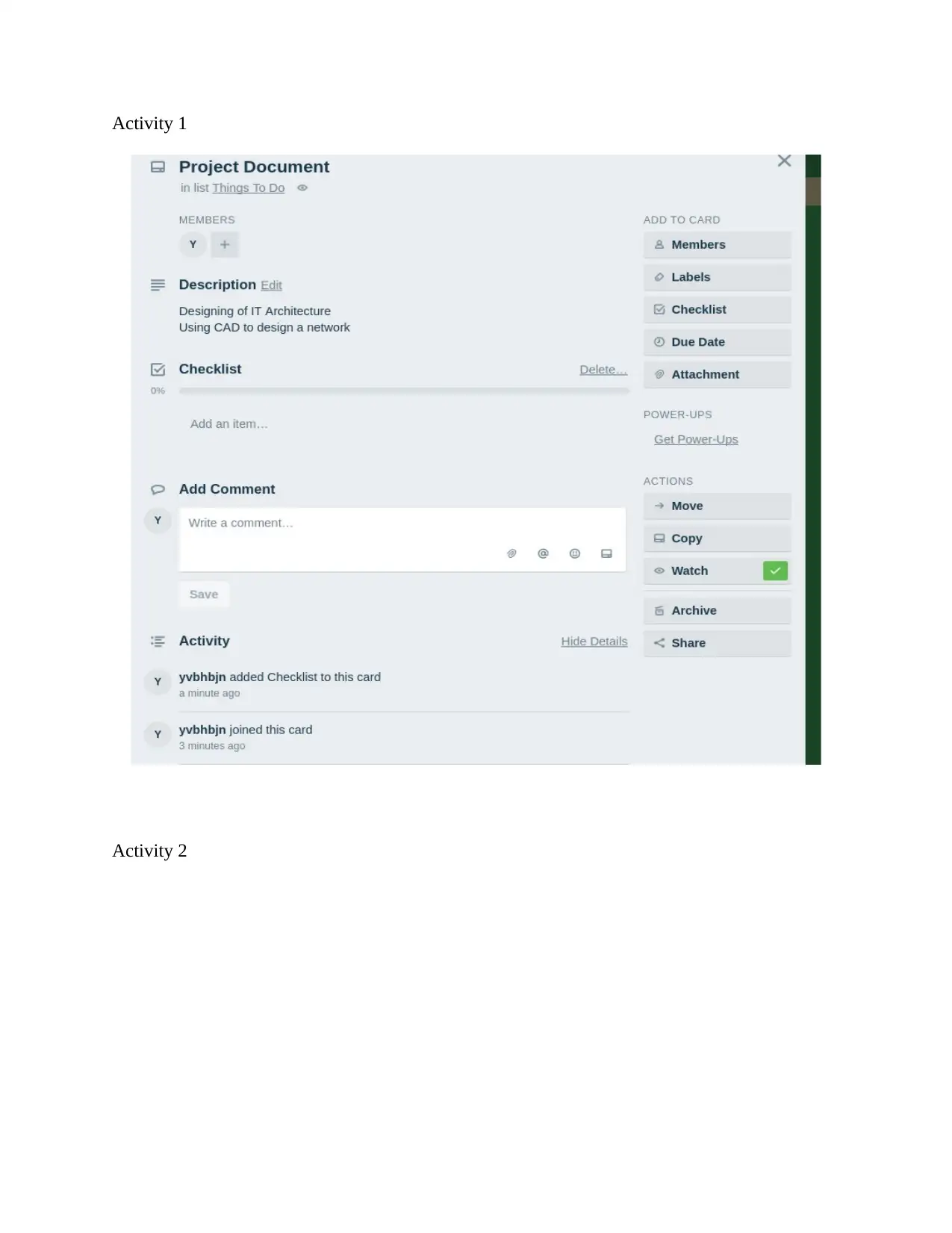
Activity 1
Activity 2
Activity 2
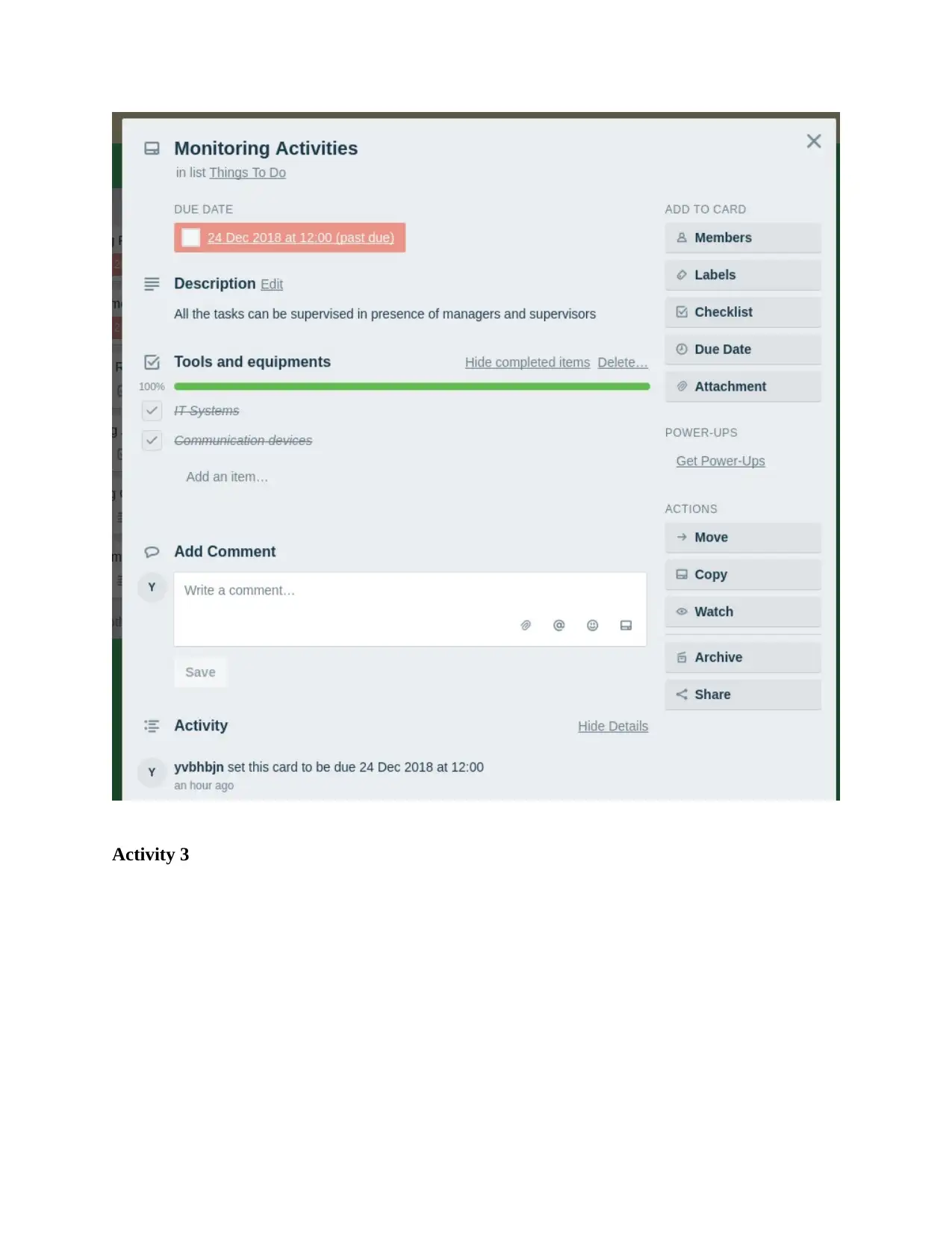
Activity 3
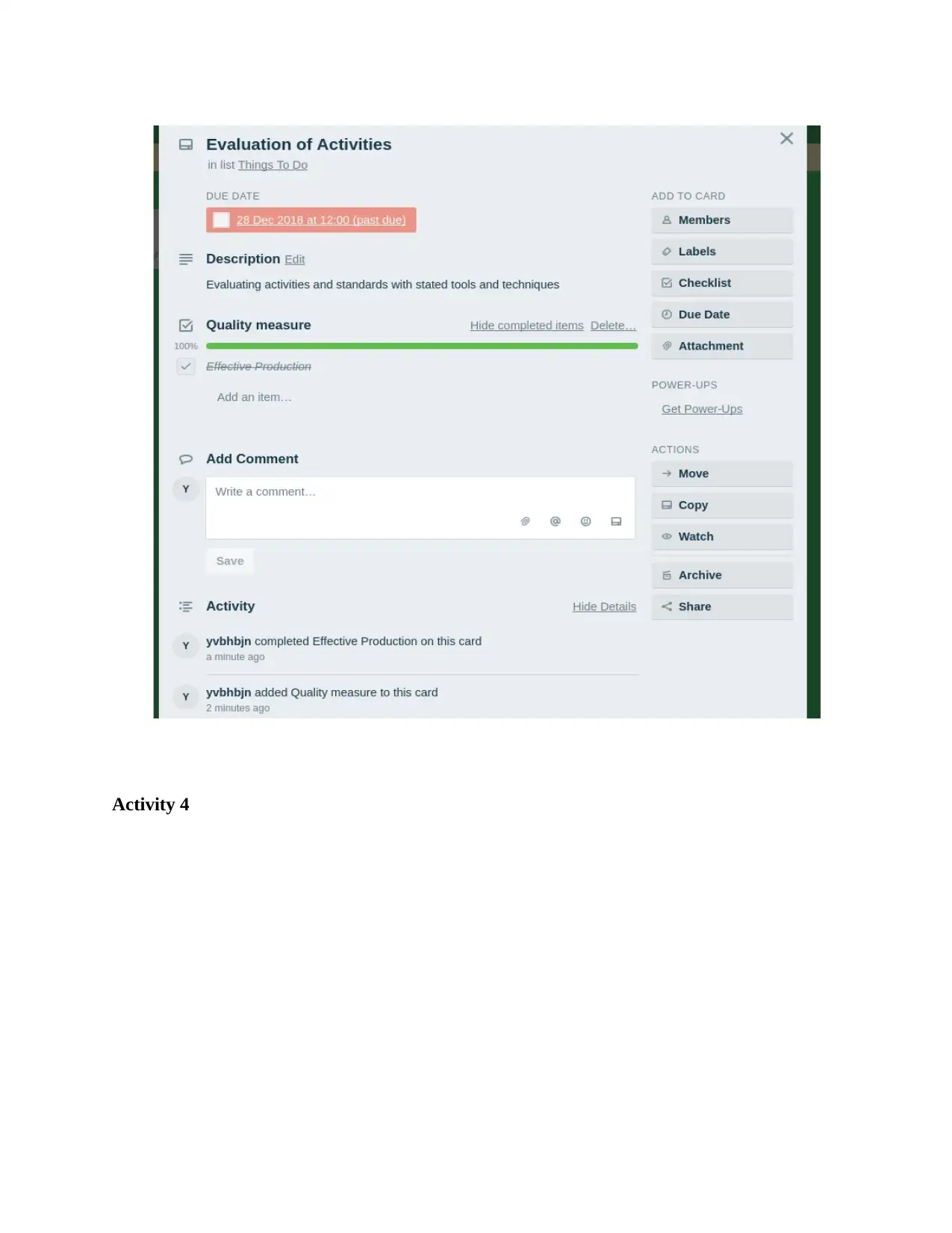
Activity 4
Paraphrase This Document
Need a fresh take? Get an instant paraphrase of this document with our AI Paraphraser
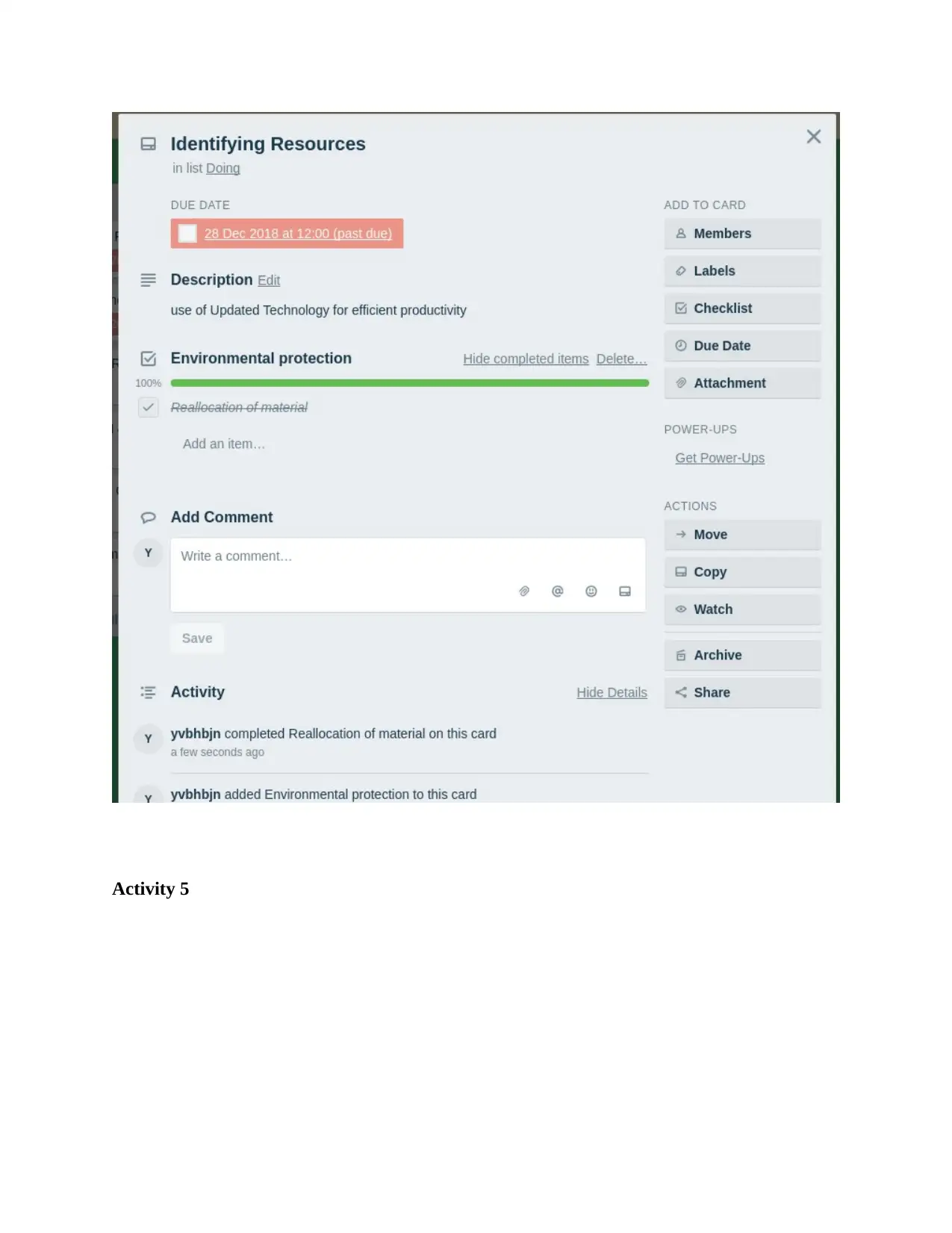
Activity 5
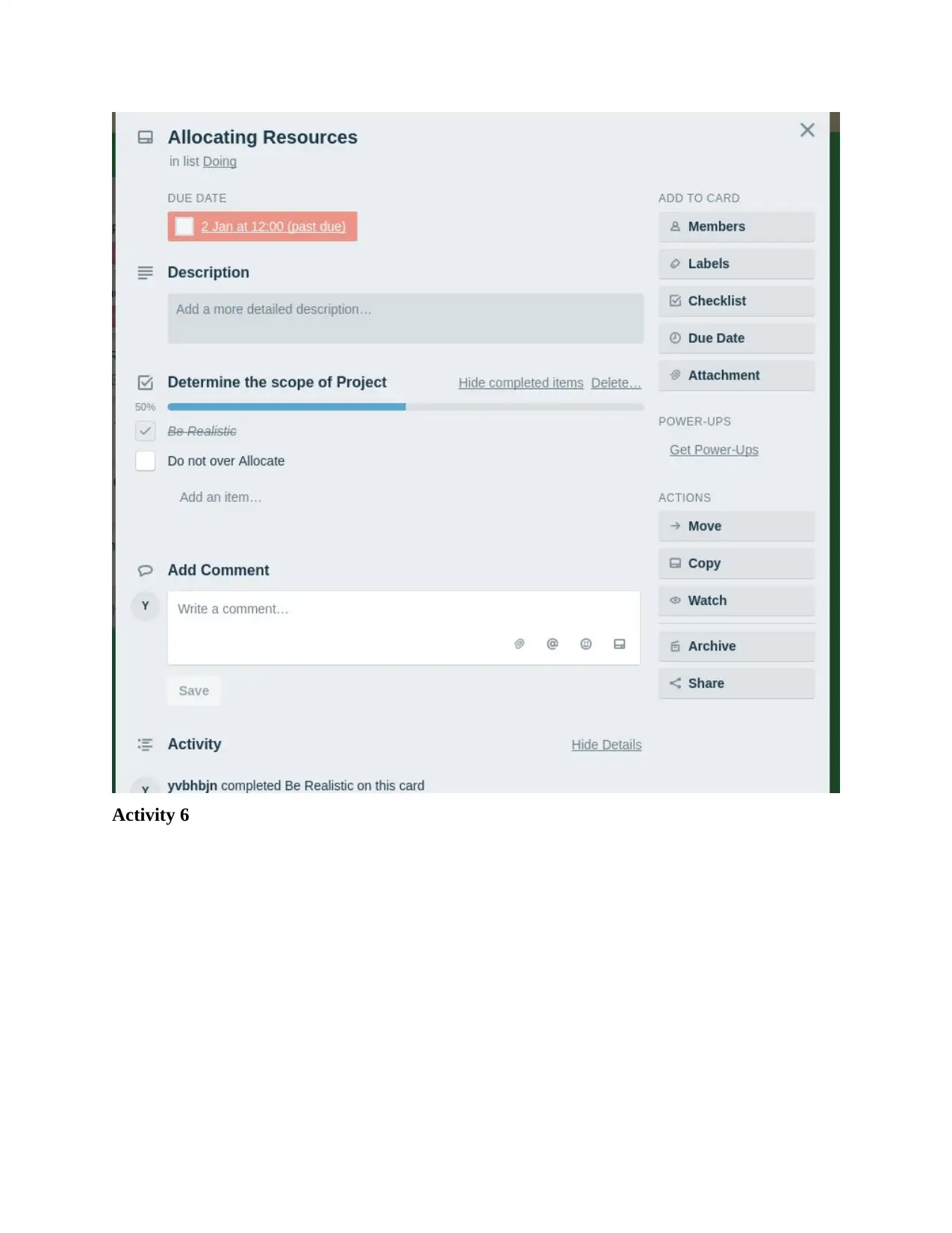
Activity 6
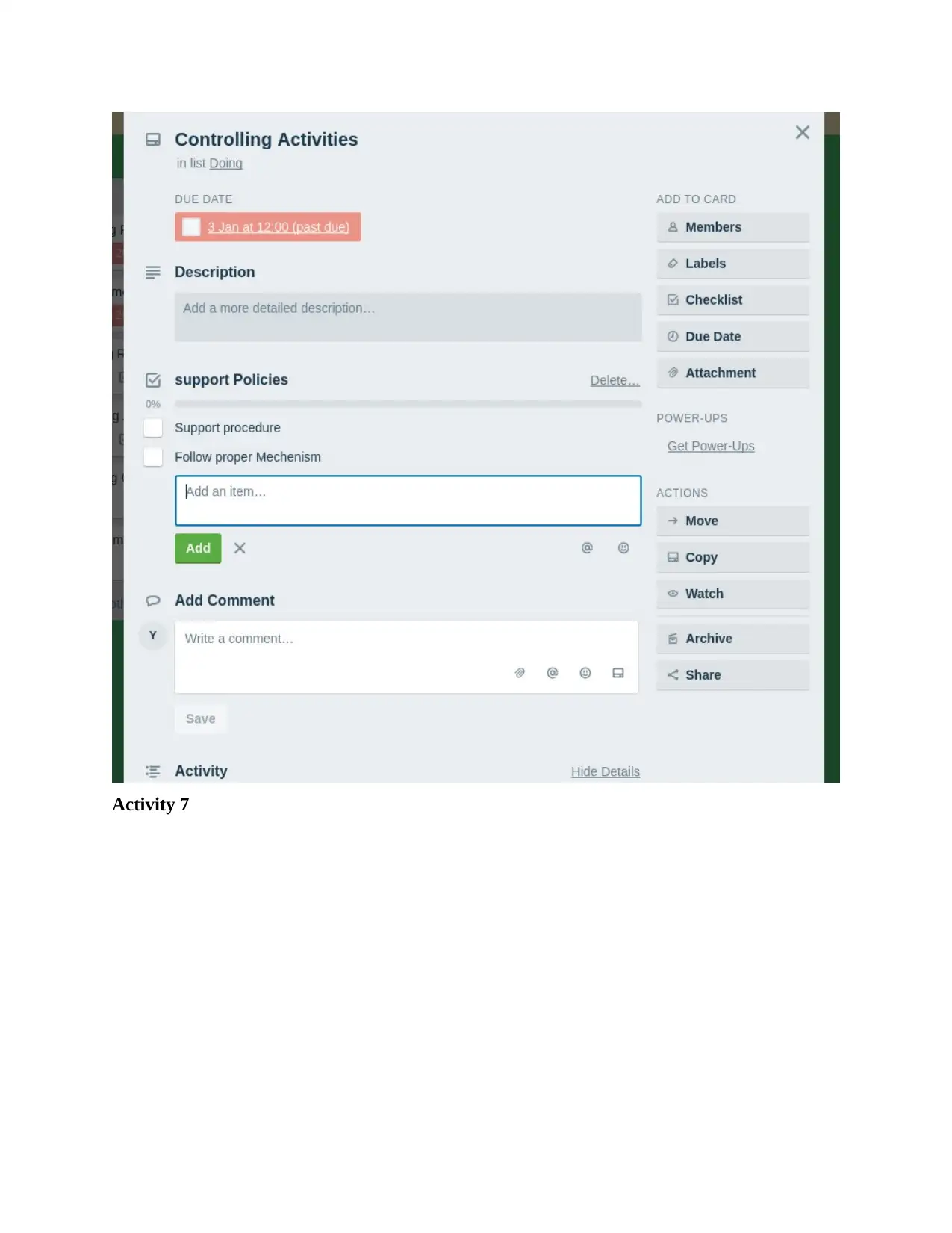
Activity 7
Secure Best Marks with AI Grader
Need help grading? Try our AI Grader for instant feedback on your assignments.
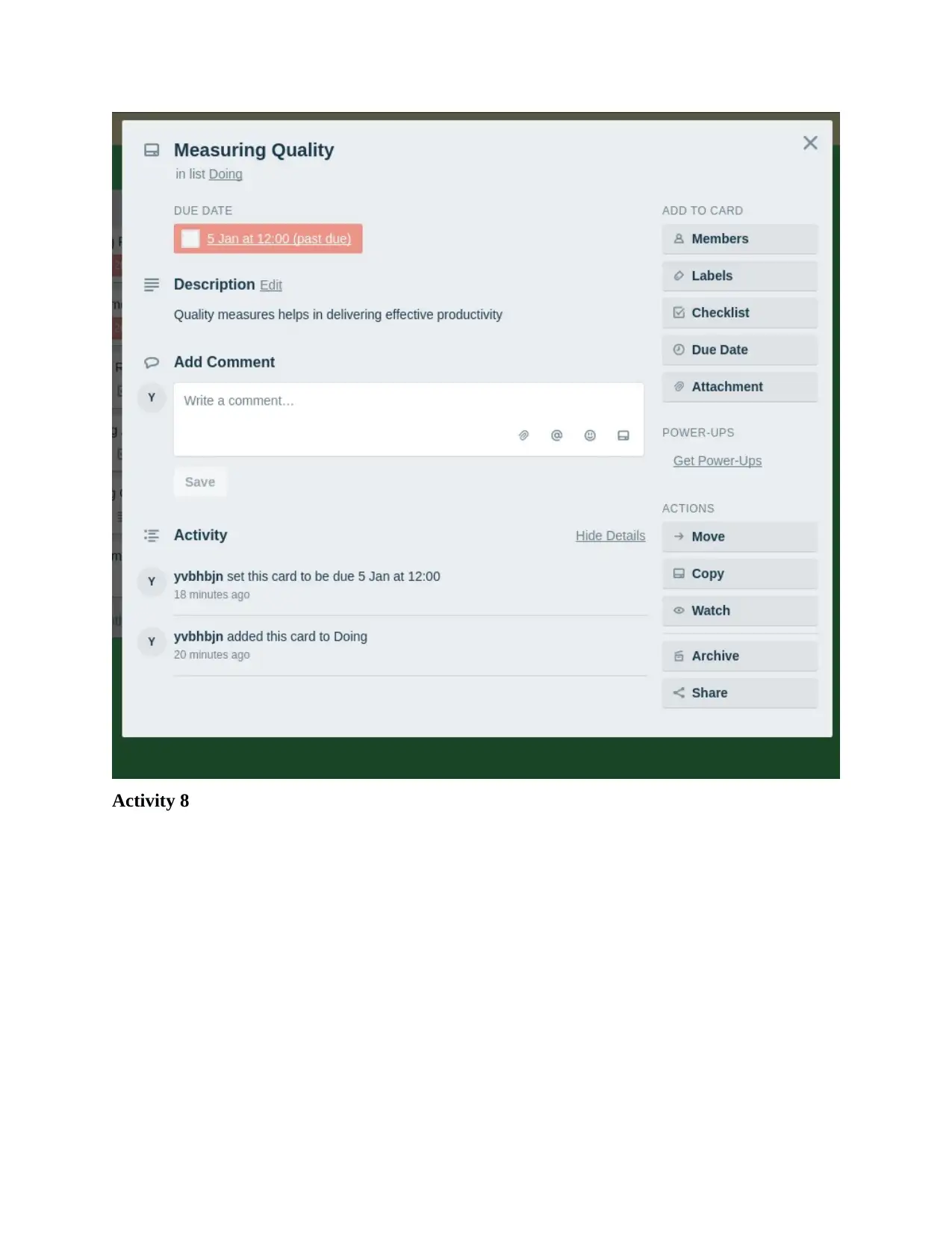
Activity 8
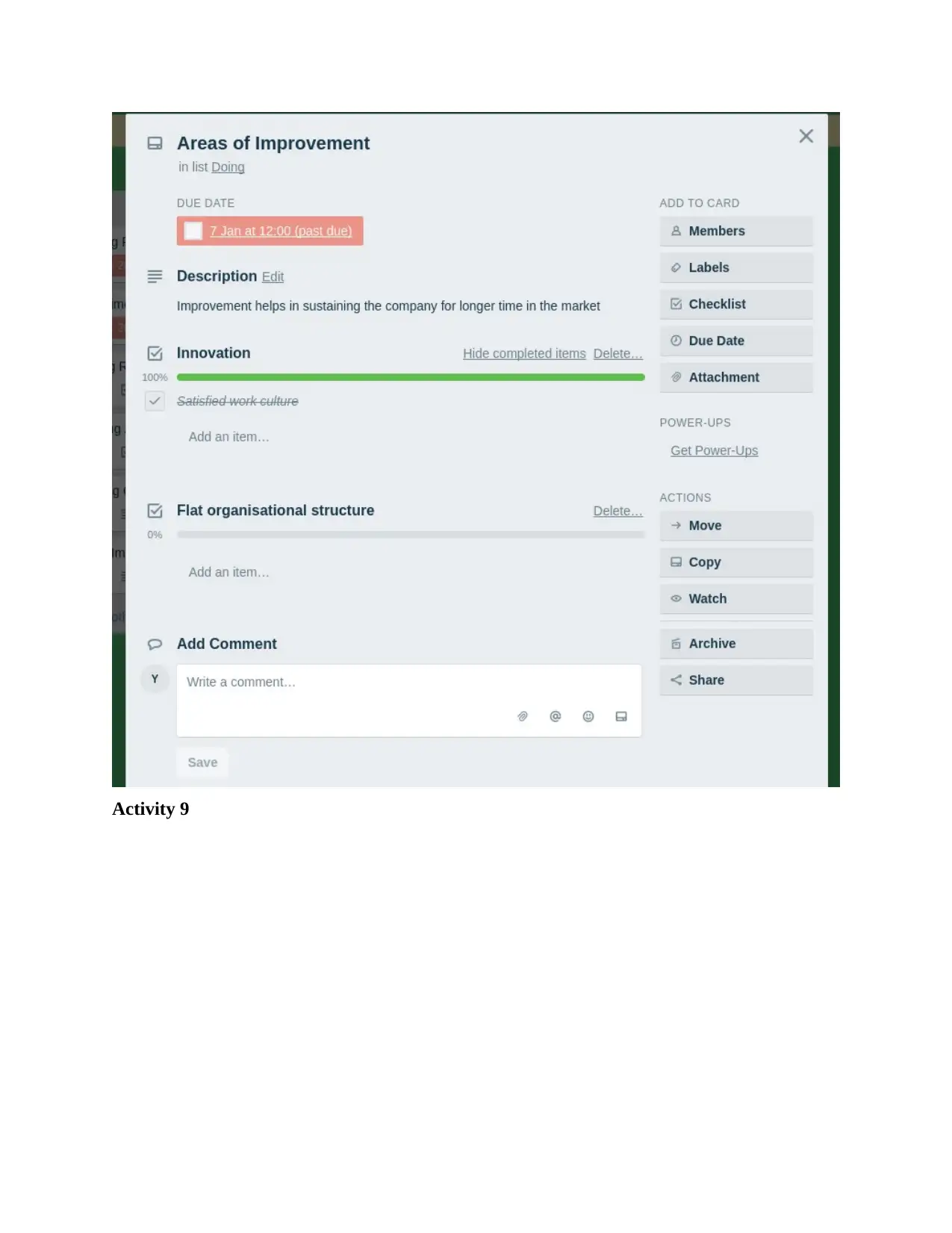
Activity 9
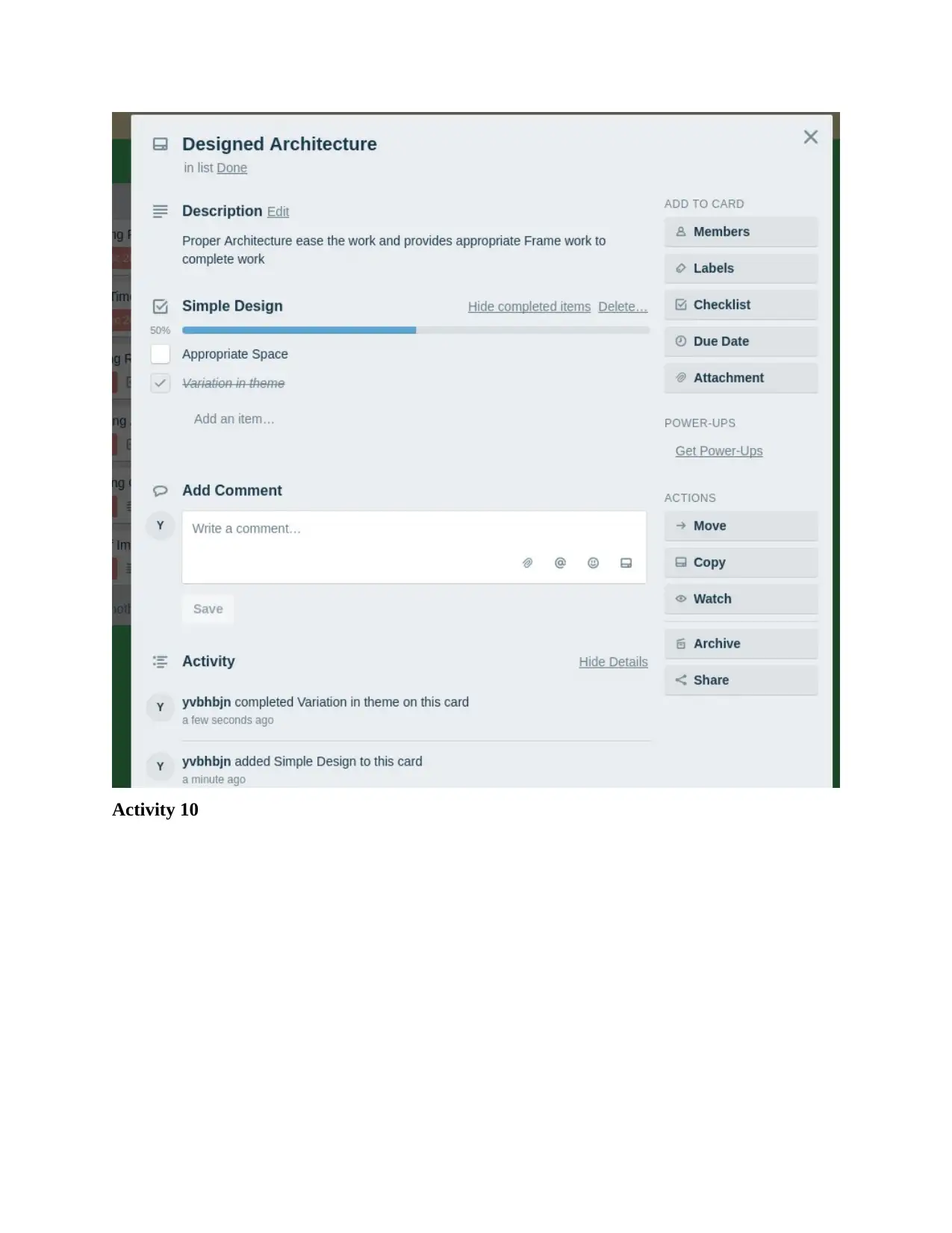
Activity 10
Paraphrase This Document
Need a fresh take? Get an instant paraphrase of this document with our AI Paraphraser
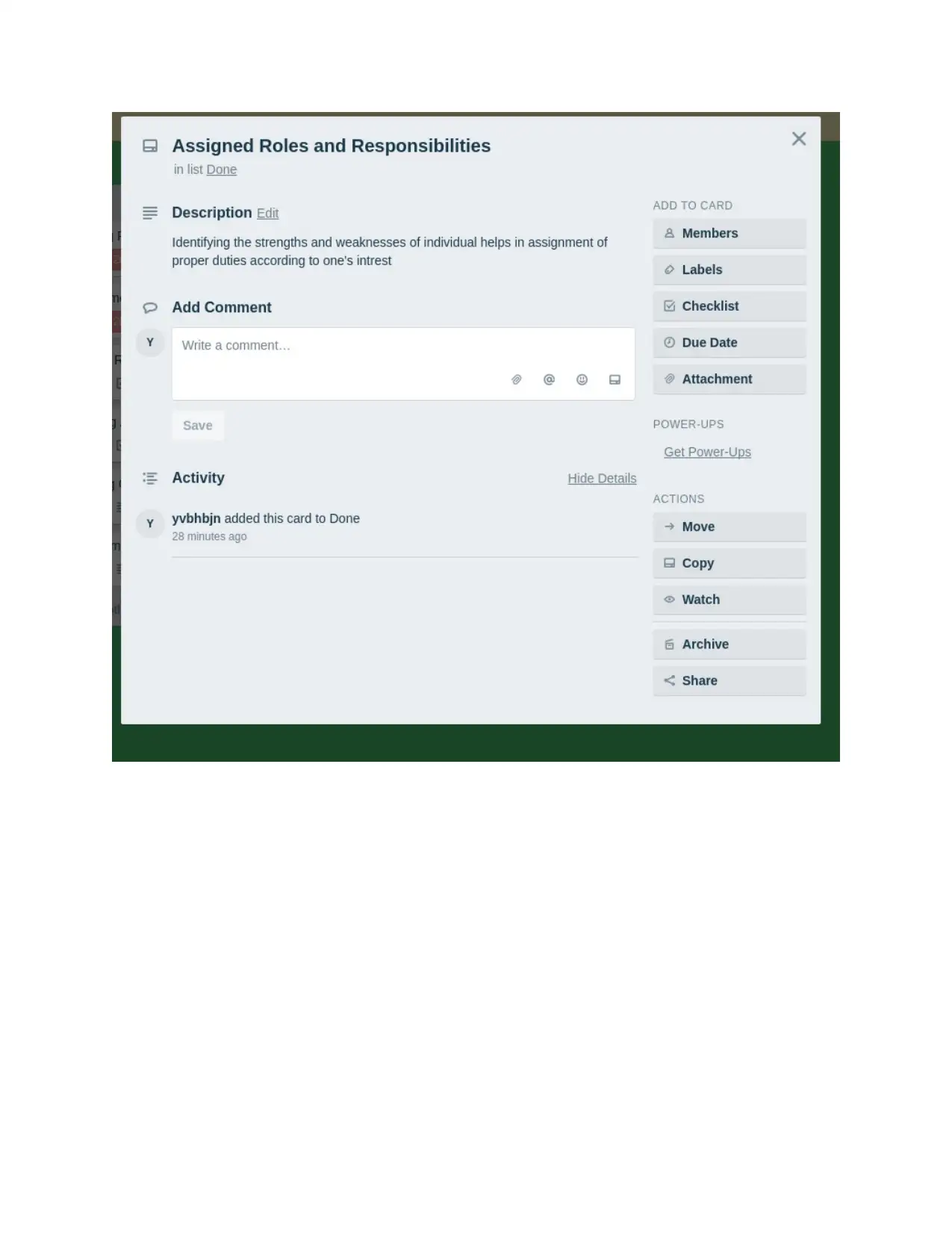
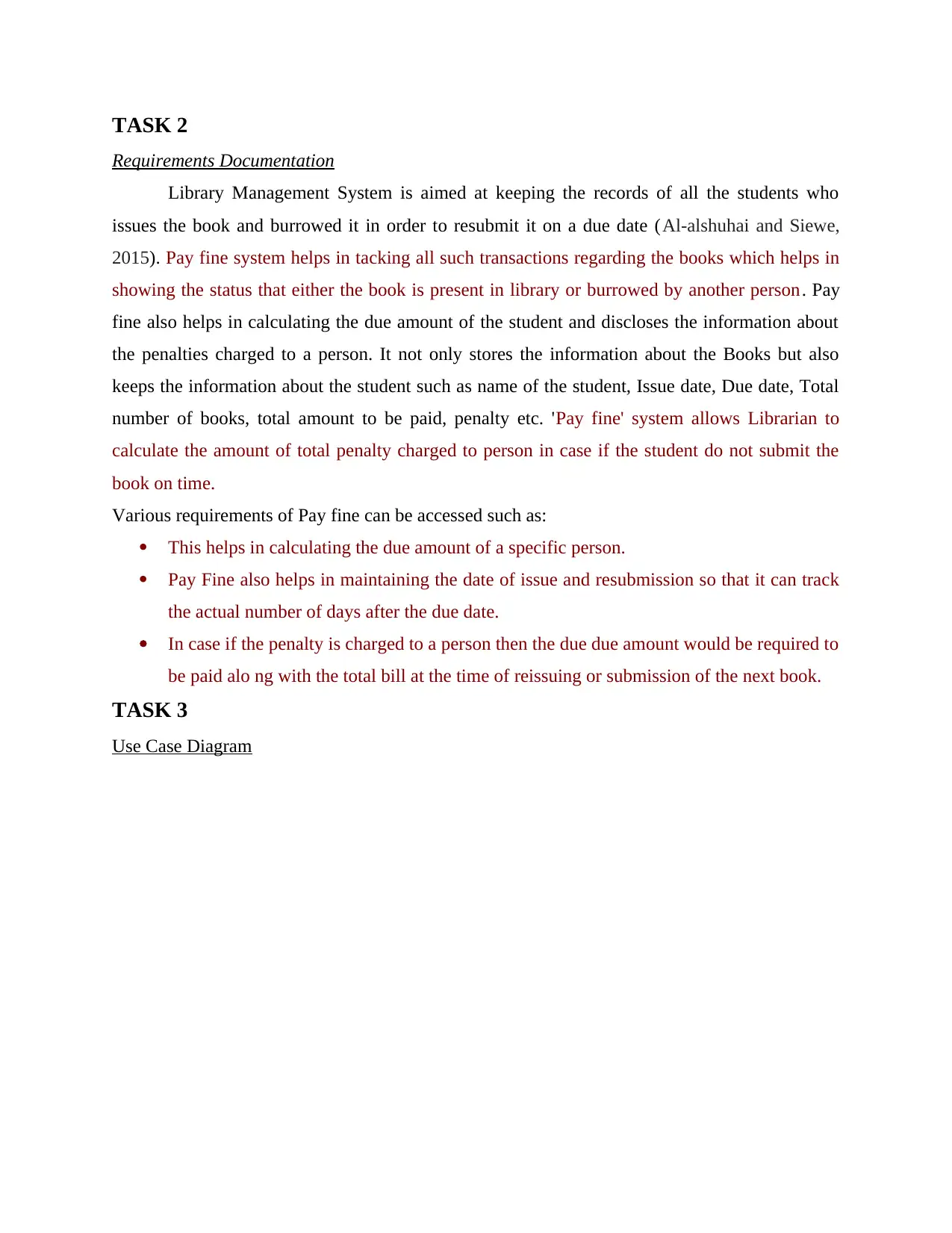
TASK 2
Requirements Documentation
Library Management System is aimed at keeping the records of all the students who
issues the book and burrowed it in order to resubmit it on a due date (Al-alshuhai and Siewe,
2015). Pay fine system helps in tacking all such transactions regarding the books which helps in
showing the status that either the book is present in library or burrowed by another person. Pay
fine also helps in calculating the due amount of the student and discloses the information about
the penalties charged to a person. It not only stores the information about the Books but also
keeps the information about the student such as name of the student, Issue date, Due date, Total
number of books, total amount to be paid, penalty etc. 'Pay fine' system allows Librarian to
calculate the amount of total penalty charged to person in case if the student do not submit the
book on time.
Various requirements of Pay fine can be accessed such as:
This helps in calculating the due amount of a specific person.
Pay Fine also helps in maintaining the date of issue and resubmission so that it can track
the actual number of days after the due date.
In case if the penalty is charged to a person then the due due amount would be required to
be paid alo ng with the total bill at the time of reissuing or submission of the next book.
TASK 3
Use Case Diagram
Requirements Documentation
Library Management System is aimed at keeping the records of all the students who
issues the book and burrowed it in order to resubmit it on a due date (Al-alshuhai and Siewe,
2015). Pay fine system helps in tacking all such transactions regarding the books which helps in
showing the status that either the book is present in library or burrowed by another person. Pay
fine also helps in calculating the due amount of the student and discloses the information about
the penalties charged to a person. It not only stores the information about the Books but also
keeps the information about the student such as name of the student, Issue date, Due date, Total
number of books, total amount to be paid, penalty etc. 'Pay fine' system allows Librarian to
calculate the amount of total penalty charged to person in case if the student do not submit the
book on time.
Various requirements of Pay fine can be accessed such as:
This helps in calculating the due amount of a specific person.
Pay Fine also helps in maintaining the date of issue and resubmission so that it can track
the actual number of days after the due date.
In case if the penalty is charged to a person then the due due amount would be required to
be paid alo ng with the total bill at the time of reissuing or submission of the next book.
TASK 3
Use Case Diagram
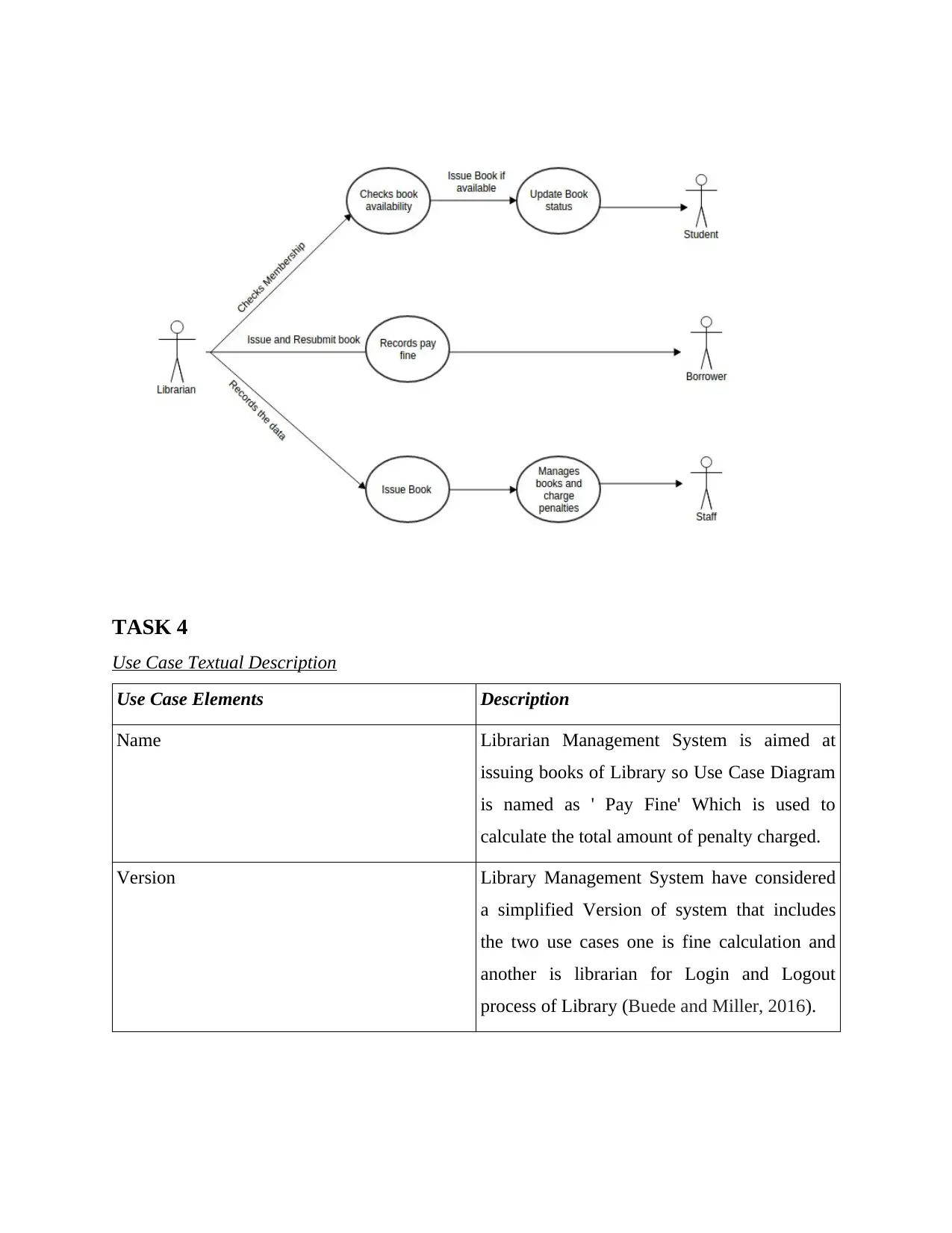
TASK 4
Use Case Textual Description
Use Case Elements Description
Name Librarian Management System is aimed at
issuing books of Library so Use Case Diagram
is named as ' Pay Fine' Which is used to
calculate the total amount of penalty charged.
Version Library Management System have considered
a simplified Version of system that includes
the two use cases one is fine calculation and
another is librarian for Login and Logout
process of Library (Buede and Miller, 2016).
Use Case Textual Description
Use Case Elements Description
Name Librarian Management System is aimed at
issuing books of Library so Use Case Diagram
is named as ' Pay Fine' Which is used to
calculate the total amount of penalty charged.
Version Library Management System have considered
a simplified Version of system that includes
the two use cases one is fine calculation and
another is librarian for Login and Logout
process of Library (Buede and Miller, 2016).
Secure Best Marks with AI Grader
Need help grading? Try our AI Grader for instant feedback on your assignments.

Goal Use Case Diagram is mainly aimed at
connecting different cases with the actor in
order to maintain the relationship accordingly.
It can be basically termed as establishing the
relationship of the users with different cases in
Library Management System.
Summary This Use Describe two Entities that helps in
named as “Librarian” and “Fine Calculation”.
Here, Librarian issues a book to the person. It
may be staff member, student or any other
person, then the availability of the demanded
book will be checked. The system either issues
the book in case if it is available or puts the
request in a queue and display that the book is
not available.
In another use case that is 'Fine calculation',
system checks the number of books issued to a
person and also checks the membership of the
person then calculated the total amount of fine
to be payable according to its purchasing
status. This Book status basically contains the
description regarding book such as name of
issuer, quantity, price of book, author's name
etc.
Actors Primary actors includes: Librarian and
members
Secondary Actors include: Fine calculation
and book availability.
Pre-condition Pre-condition of this system contains the
system which firstly checks the availability of
connecting different cases with the actor in
order to maintain the relationship accordingly.
It can be basically termed as establishing the
relationship of the users with different cases in
Library Management System.
Summary This Use Describe two Entities that helps in
named as “Librarian” and “Fine Calculation”.
Here, Librarian issues a book to the person. It
may be staff member, student or any other
person, then the availability of the demanded
book will be checked. The system either issues
the book in case if it is available or puts the
request in a queue and display that the book is
not available.
In another use case that is 'Fine calculation',
system checks the number of books issued to a
person and also checks the membership of the
person then calculated the total amount of fine
to be payable according to its purchasing
status. This Book status basically contains the
description regarding book such as name of
issuer, quantity, price of book, author's name
etc.
Actors Primary actors includes: Librarian and
members
Secondary Actors include: Fine calculation
and book availability.
Pre-condition Pre-condition of this system contains the
system which firstly checks the availability of
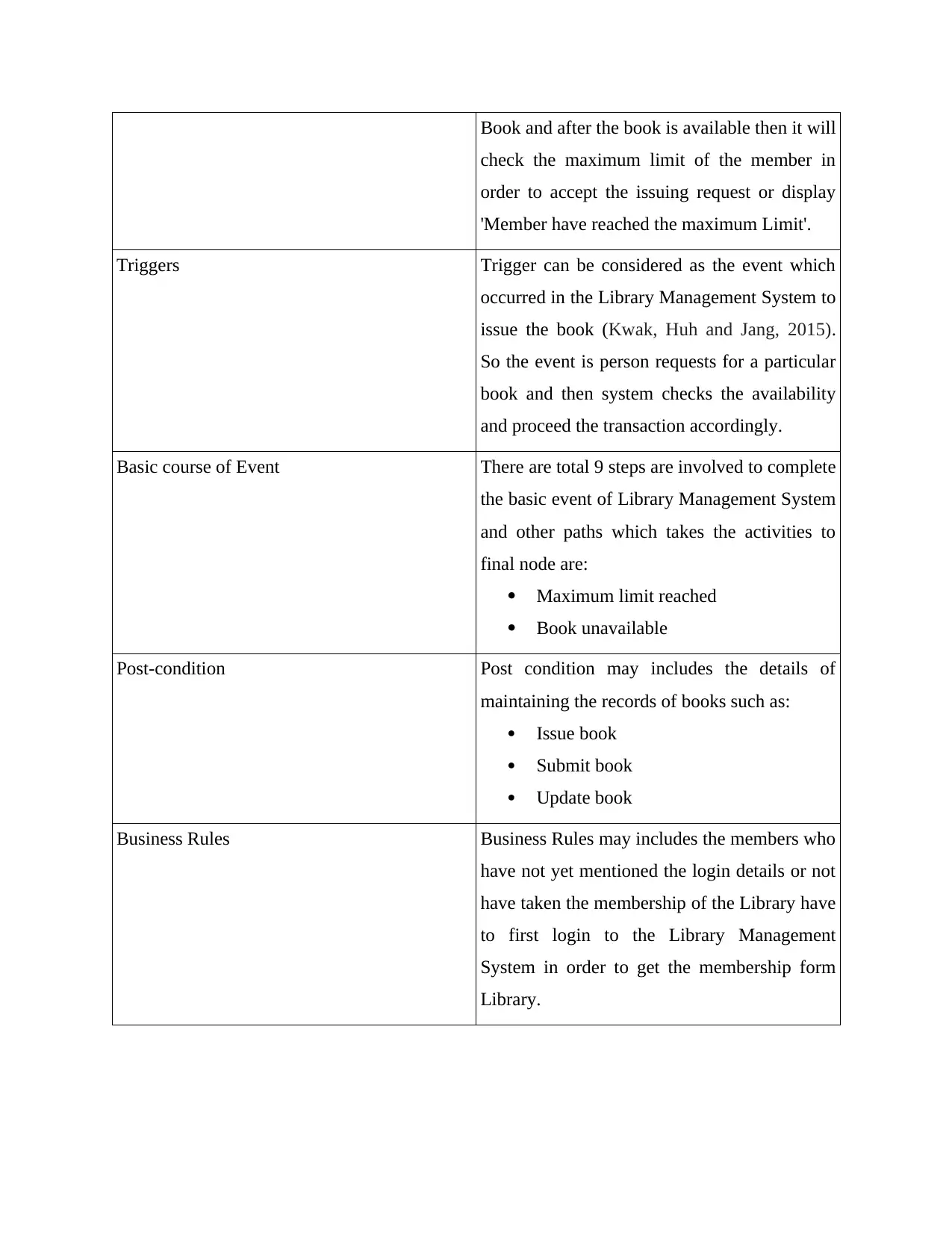
Book and after the book is available then it will
check the maximum limit of the member in
order to accept the issuing request or display
'Member have reached the maximum Limit'.
Triggers Trigger can be considered as the event which
occurred in the Library Management System to
issue the book (Kwak, Huh and Jang, 2015).
So the event is person requests for a particular
book and then system checks the availability
and proceed the transaction accordingly.
Basic course of Event There are total 9 steps are involved to complete
the basic event of Library Management System
and other paths which takes the activities to
final node are:
Maximum limit reached
Book unavailable
Post-condition Post condition may includes the details of
maintaining the records of books such as:
Issue book
Submit book
Update book
Business Rules Business Rules may includes the members who
have not yet mentioned the login details or not
have taken the membership of the Library have
to first login to the Library Management
System in order to get the membership form
Library.
check the maximum limit of the member in
order to accept the issuing request or display
'Member have reached the maximum Limit'.
Triggers Trigger can be considered as the event which
occurred in the Library Management System to
issue the book (Kwak, Huh and Jang, 2015).
So the event is person requests for a particular
book and then system checks the availability
and proceed the transaction accordingly.
Basic course of Event There are total 9 steps are involved to complete
the basic event of Library Management System
and other paths which takes the activities to
final node are:
Maximum limit reached
Book unavailable
Post-condition Post condition may includes the details of
maintaining the records of books such as:
Issue book
Submit book
Update book
Business Rules Business Rules may includes the members who
have not yet mentioned the login details or not
have taken the membership of the Library have
to first login to the Library Management
System in order to get the membership form
Library.
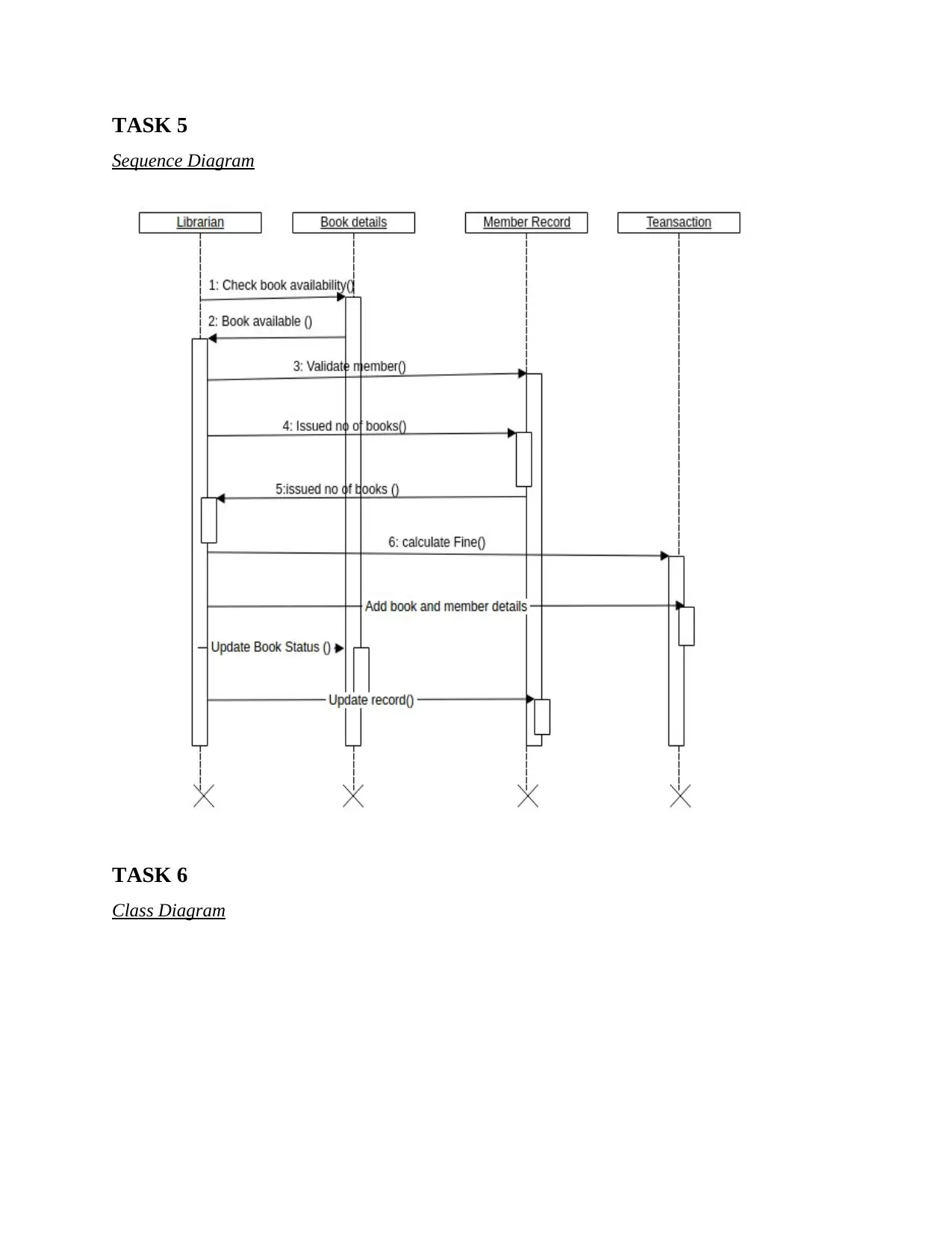
TASK 5
Sequence Diagram
TASK 6
Class Diagram
Sequence Diagram
TASK 6
Class Diagram
Paraphrase This Document
Need a fresh take? Get an instant paraphrase of this document with our AI Paraphraser

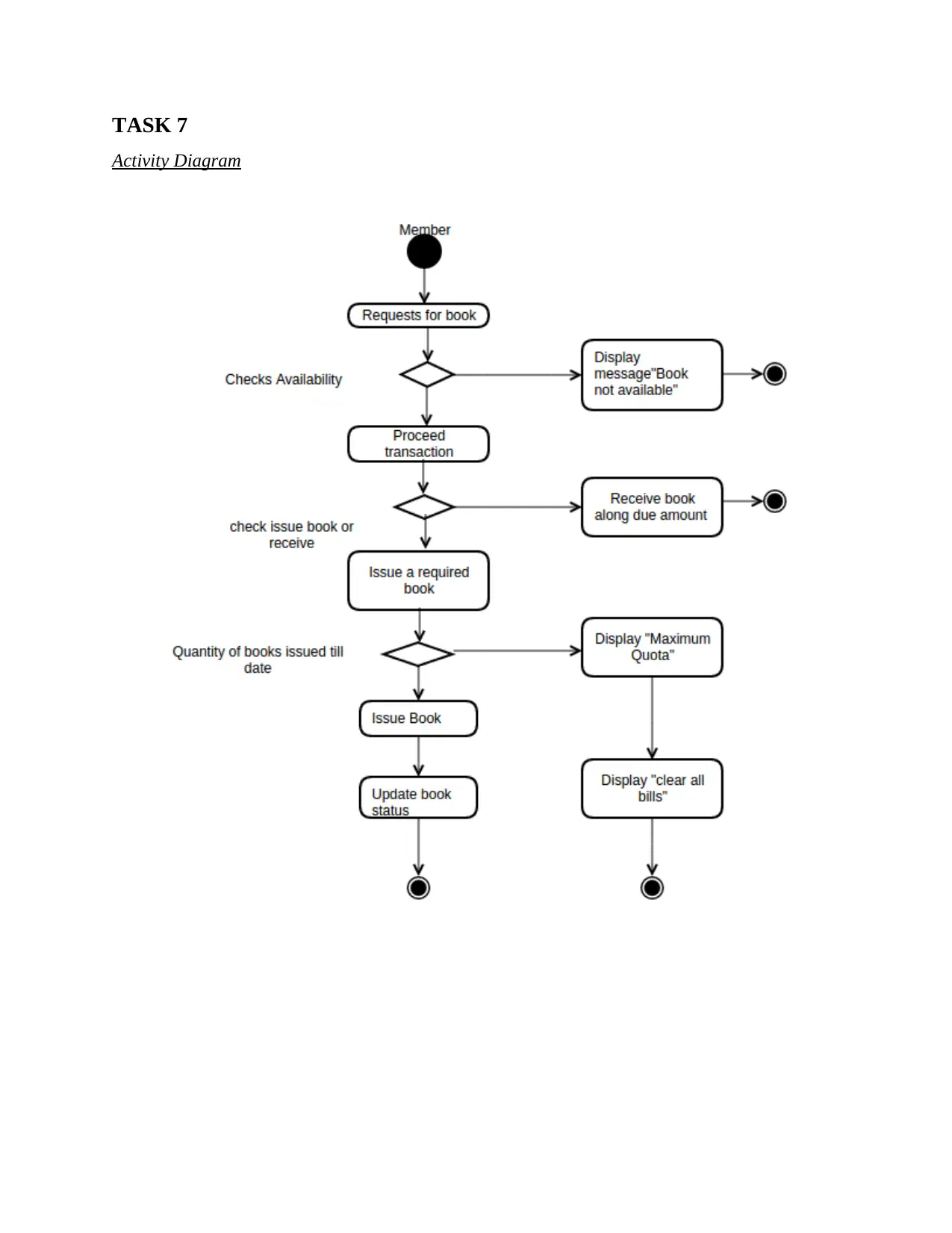
TASK 7
Activity Diagram
Activity Diagram
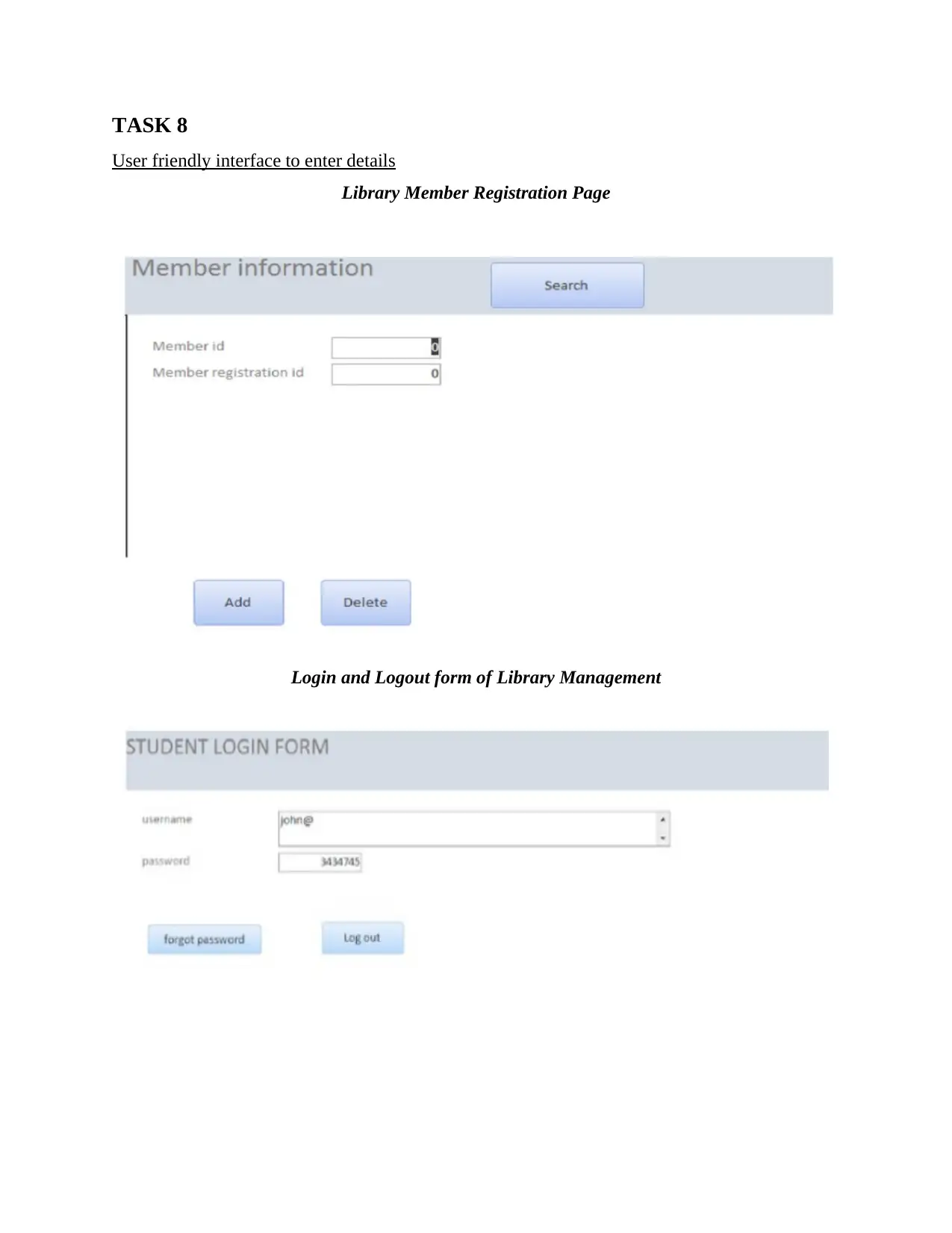
TASK 8
User friendly interface to enter details
Library Member Registration Page
Login and Logout form of Library Management
User friendly interface to enter details
Library Member Registration Page
Login and Logout form of Library Management
Secure Best Marks with AI Grader
Need help grading? Try our AI Grader for instant feedback on your assignments.
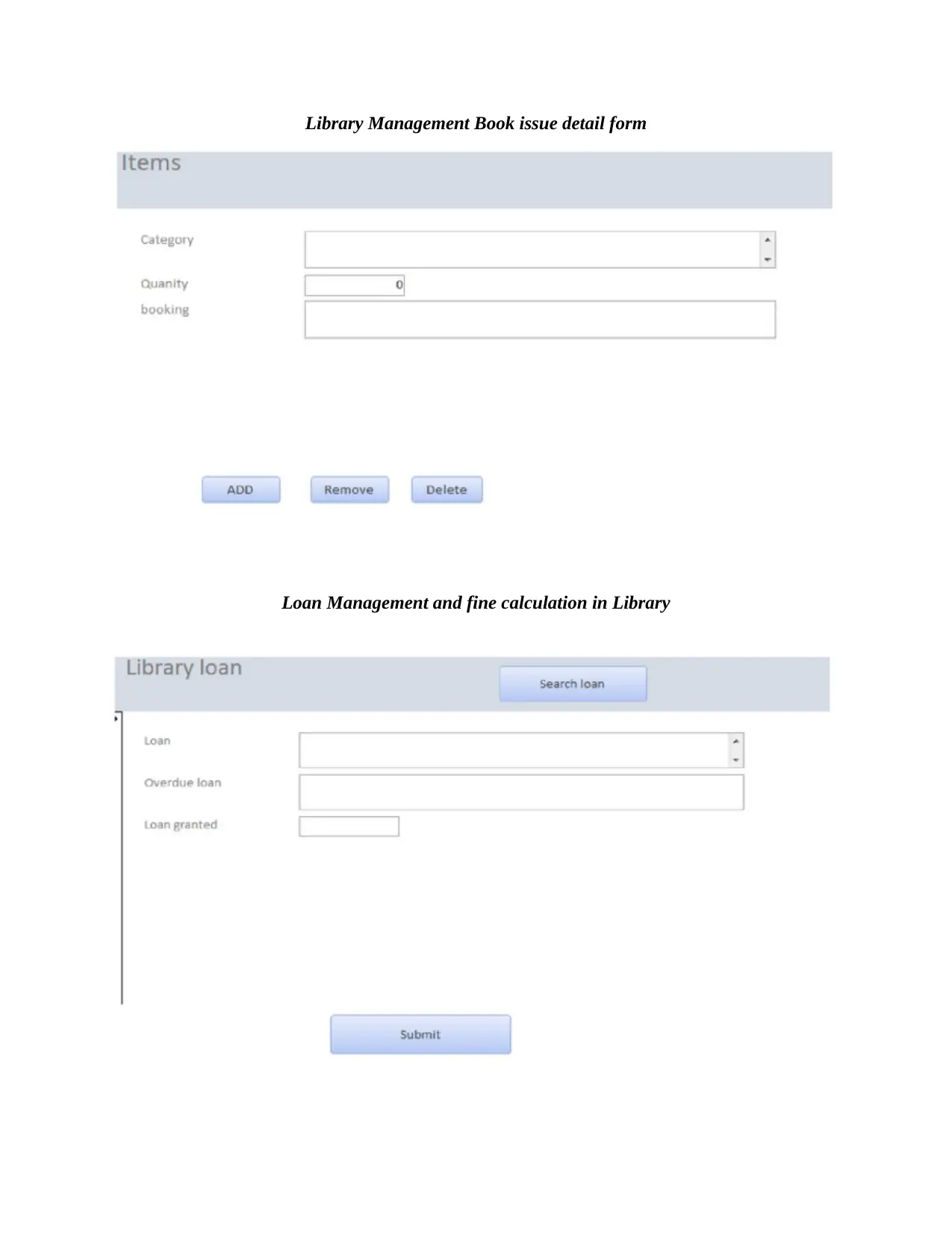
Library Management Book issue detail form
Loan Management and fine calculation in Library
Loan Management and fine calculation in Library

TASK 9
Test Case generation
Parti
cular
s
Test Name Description Scenario Precondition Input Output
1 Book
Availability
Test
This test is
performed in
order to check
the
availability of
book within
library
This type of Test
helps in
determining
availability of the
book and thus
this helps the
librarian in
issuing the book
in case if it is
available in
library (Seidl and
et.al., 2015). The
scenario includes
If Else condition
that helps in
further
transaction of
book.
This involves
the
precondition
as the book is
available then
library
management
system will
checks the
membership
of the person
and
accordingly
access the due
penalties and
fine left if
any.
Book
name,
author
name
Check
validation
else Display
“Book is not
available”
2 Member
Validity Test
This is done
in order to
check
membership
of the person
in order to
deal with the
Here, The
Scenario depicts
the situation
where
membership of
the person is
confirmed. The
If the member
is already a
member of
the library
then book
will be issued
else member
Name of
member,
ID and
password
Book issued
or else
member
have to fill
form
Test Case generation
Parti
cular
s
Test Name Description Scenario Precondition Input Output
1 Book
Availability
Test
This test is
performed in
order to check
the
availability of
book within
library
This type of Test
helps in
determining
availability of the
book and thus
this helps the
librarian in
issuing the book
in case if it is
available in
library (Seidl and
et.al., 2015). The
scenario includes
If Else condition
that helps in
further
transaction of
book.
This involves
the
precondition
as the book is
available then
library
management
system will
checks the
membership
of the person
and
accordingly
access the due
penalties and
fine left if
any.
Book
name,
author
name
Check
validation
else Display
“Book is not
available”
2 Member
Validity Test
This is done
in order to
check
membership
of the person
in order to
deal with the
Here, The
Scenario depicts
the situation
where
membership of
the person is
confirmed. The
If the member
is already a
member of
the library
then book
will be issued
else member
Name of
member,
ID and
password
Book issued
or else
member
have to fill
form
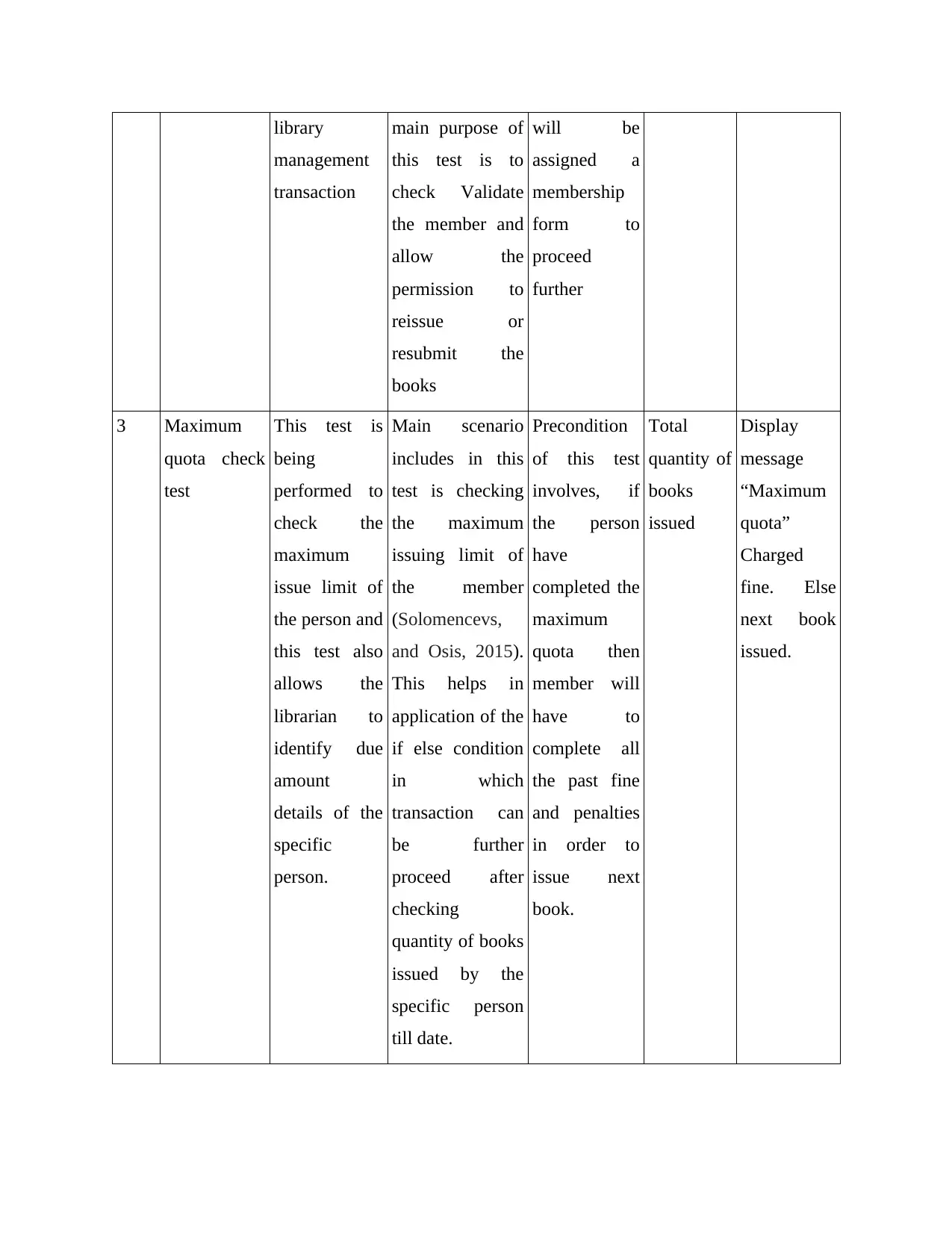
library
management
transaction
main purpose of
this test is to
check Validate
the member and
allow the
permission to
reissue or
resubmit the
books
will be
assigned a
membership
form to
proceed
further
3 Maximum
quota check
test
This test is
being
performed to
check the
maximum
issue limit of
the person and
this test also
allows the
librarian to
identify due
amount
details of the
specific
person.
Main scenario
includes in this
test is checking
the maximum
issuing limit of
the member
(Solomencevs,
and Osis, 2015).
This helps in
application of the
if else condition
in which
transaction can
be further
proceed after
checking
quantity of books
issued by the
specific person
till date.
Precondition
of this test
involves, if
the person
have
completed the
maximum
quota then
member will
have to
complete all
the past fine
and penalties
in order to
issue next
book.
Total
quantity of
books
issued
Display
message
“Maximum
quota”
Charged
fine. Else
next book
issued.
management
transaction
main purpose of
this test is to
check Validate
the member and
allow the
permission to
reissue or
resubmit the
books
will be
assigned a
membership
form to
proceed
further
3 Maximum
quota check
test
This test is
being
performed to
check the
maximum
issue limit of
the person and
this test also
allows the
librarian to
identify due
amount
details of the
specific
person.
Main scenario
includes in this
test is checking
the maximum
issuing limit of
the member
(Solomencevs,
and Osis, 2015).
This helps in
application of the
if else condition
in which
transaction can
be further
proceed after
checking
quantity of books
issued by the
specific person
till date.
Precondition
of this test
involves, if
the person
have
completed the
maximum
quota then
member will
have to
complete all
the past fine
and penalties
in order to
issue next
book.
Total
quantity of
books
issued
Display
message
“Maximum
quota”
Charged
fine. Else
next book
issued.
Paraphrase This Document
Need a fresh take? Get an instant paraphrase of this document with our AI Paraphraser

REFERENCES
Books and Journals
Al-alshuhai, A. and Siewe, F., 2015, October. An extension of UML activity diagram to model
the behaviour of context-aware systems. In Computer and Information Technology;
Ubiquitous Computing and Communications; Dependable, Autonomic and Secure
Computing; Pervasive Intelligence and Computing (CIT/IUCC/DASC/PICOM), 2015
IEEE International Conference on (pp. 431-437). IEEE.
Buede, D.M. and Miller, W.D., 2016. The engineering design of systems: models and methods.
John Wiley & Sons.
Kwak, Y., Huh, J.H. and Jang, C., 2015. Development of a model predictive control framework
through real-time building energy management system data. Applied Energy. 155. pp.1-
13.
Seidl, M. and et.al., 2015. The Use Case Diagram. In UML@ Classroom (pp. 23-47). Springer,
Cham.
Solomencevs, A. and Osis, J., 2015, April. The algorithm for getting a UML class diagram from
Topological Functioning Model. In Evaluation of Novel Approaches to Software
Engineering (ENASE), 2015 International Conference on (pp. 341-351). IEEE.
Books and Journals
Al-alshuhai, A. and Siewe, F., 2015, October. An extension of UML activity diagram to model
the behaviour of context-aware systems. In Computer and Information Technology;
Ubiquitous Computing and Communications; Dependable, Autonomic and Secure
Computing; Pervasive Intelligence and Computing (CIT/IUCC/DASC/PICOM), 2015
IEEE International Conference on (pp. 431-437). IEEE.
Buede, D.M. and Miller, W.D., 2016. The engineering design of systems: models and methods.
John Wiley & Sons.
Kwak, Y., Huh, J.H. and Jang, C., 2015. Development of a model predictive control framework
through real-time building energy management system data. Applied Energy. 155. pp.1-
13.
Seidl, M. and et.al., 2015. The Use Case Diagram. In UML@ Classroom (pp. 23-47). Springer,
Cham.
Solomencevs, A. and Osis, J., 2015, April. The algorithm for getting a UML class diagram from
Topological Functioning Model. In Evaluation of Novel Approaches to Software
Engineering (ENASE), 2015 International Conference on (pp. 341-351). IEEE.

1 out of 27
Related Documents
Your All-in-One AI-Powered Toolkit for Academic Success.
+13062052269
info@desklib.com
Available 24*7 on WhatsApp / Email
![[object Object]](/_next/static/media/star-bottom.7253800d.svg)
Unlock your academic potential
© 2024 | Zucol Services PVT LTD | All rights reserved.





